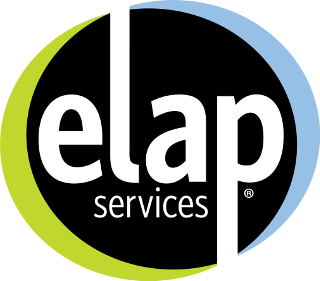Resources
Reference-Based Pricing
Reference-based pricing explained | What is reference-based pricing?
What is reference-based pricing?
Reference-based pricing (RBP) is a cost-containment strategy that uses an established benchmark, like Medicare, to determine what is paid for healthcare services. Self-insured businesses can add a reference-based pricing solution to their health plan and reduce annual costs by up to 30%. RBP providers review and audit medical bills, reprice them based on Medicare or some other benchmark like the actual cost reported by the hospital, and pay a fair markup on those charges. As a result, employers and employees can save money on their healthcare spending.
Think of reference-based pricing as a bottom-up approach, starting at the bottom with a reference metric — often the actual cost or Medicare — then adding a fair profit margin to determine provider payment. This is contrary to the Preferred Provider Organization (PPO) system, which starts at the top with a price that originates on a facility’s charge-master and then discounts to reduce the inflated price.
How does reference-based pricing from ELAP work?
Reference-based pricing health plans set limits on paying healthcare providers for procedures and related healthcare costs. With ELAP’s solution, the payments are based on actual costs from the providers (self-reported annually by law) and Medicare reimbursement rates as determined by the government.
After receiving care, ELAP:
- Audits the healthcare claim for errors and unexplained and excessive charges
- Identifies the actual costs of services and materials
- Reprices based on Medicare and actual costs
- Determines equitable payment with a fair margin for the provider
Why is reference-based pricing needed?
Quite simply, to identify inflated pricing, address variable pricing, and ensure employers and their employees pay a fair price for healthcare. According to a report in the Wall Street Journal and the Health Care Cost Institute, the cost of a cesarean section can fluctuate between $6,241 and $60,584 in the same hospital. It all depends on if you’re paying cash, have a health system plan, Medicare, are out-of-network, etc. The same report identified that one hospital system had 223 different prices for the same procedure.
How long has reference based pricing existed?
ELAP pioneered reference-based pricing well over a decade ago. Since then, the industry has expanded with similar offerings from other vendors. With dramatic increases in healthcare costs and a history of proven cost reductions, RBP’s popularity has grown with businesses that are self-funding their health insurance.
What are the advantages of reference-based pricing?
According to Statista, self-funded health plans in 2020 covered the majority of employees in the United States. The organizations that leverage RBP in self-funded insurance plans enjoy the following benefits:

Employer savings – On average, businesses can save up to 30% of their total healthcare costs in the first year alone. That’s an amount that can transform a business’ bottom line. Since its inception, ELAP has saved clients nearly $1 billion compared to estimated PPO costs.
Employee savings – Employees keep more of their hard-earned paychecks as businesses no longer need to shift costs to their employees through increased yearly premiums or high-deductible health plans (HDHP). Additionally, employees see real savings via lower out-of-pocket charges.
Flexibility – Depending on the plan design, employees are not restricted to a provider network so there’s more freedom of choice. Offering a reference-based pricing plan alongside a PPO plan is becoming increasingly popular with employers, allowing employees to choose between the two.
Investing in the business – Employers can reinvest reference-based pricing savings into their business. Our clients have elected to hire more workers, provide additional employee benefits and perks, and invested savings in growth initiatives.
Hiring & retaining top talent – With a comprehensive, lower-cost health plan that allows employees to visit any provider, employers can hire anywhere, deliver richer benefits and offer more competitive salaries.
What businesses can use reference-based pricing?
Businesses must be self-insured to take advantage of RBP.
What does it mean to be self-insured?1
With a self-funded self-insured health plan, employers assume the financial risk and benefits of providing healthcare to employees. Essentially, employers pay billed claims out-of-pocket instead of paying premiums to an insurance carrier. Most self-insured employers set up a special fund from corporate and employee contributions to pay healthcare-related claims.
Benefits of being self-insured include:
- The ability to customize employee plans while providing better financial solutions for the business, e.g., reference-based pricing.
- Generating interest income from healthcare funds for reinvestment in the business and improved cash flow (no need to pre-pay insurance firms).

Why move to reference-based pricing vs. traditional healthcare plans
Rising healthcare costs have widespread implications for the country’s 150 million workers who have health insurance through their employer. Premiums for family coverage have increased by 55% since 2007.
These increases strain American workers, their families and their health.
Financial hardship. According to a study by the Kaiser Family Foundation,2 26% of Americans struggle to pay off medical debt, and 66% of those Americans have debt from a one-time or short-term medical expense, such as a single hospital stay, not a chronic condition.
Decreased care. According to a national poll from NORC at the University of Chicago and the West Health Institute,3 about 40% of Americans report skipping a recommended medical test or treatment and 44% say they didn’t go to a doctor when they were sick or injured because of cost.
Worsening outcomes. According to a poll by the American College of Emergency Physicians,4 about 80% of emergency room physicians said they treated insured patients who have sacrificed or delayed medical care due to unaffordable out-of-pocket costs, co-insurance or high deductibles.
According to Milliman, Inc.,5 a premier global consulting and actuarial firm, healthcare costs will surge 8.4% in 2021, a higher rate than GDP growth over the past five years. The Milliman Medical Index predicts healthcare for a family of four will increase from $26,078 in 2020 to $28,256, and individual costs will rise to $6,516 from $6,052. As expected, along with the general rise in healthcare costs, Milliman anticipates employer-sponsored PPO costs to jump in 2021.
However, as noted previously, reference-based pricing can deliver decreased costs and lower out-of-pocket expenses for employees. This results in workers that are healthier, happier and on the job.
Can RBP protect employers & employees from unexpected healthcare costs?
Yes, the right partner will structure your health plan to protect both the company and its employees.
Stop loss insurance – While the largest employers have sufficient financial reserves to cover virtually any amount of healthcare costs, most self-insured employers purchase what is known as stop-loss insurance to reimburse them for claims above a specified dollar level. This is an insurance contract between the stop-loss carrier and the employer and is not deemed to be a health insurance policy covering individual plan participants.
Balance bills – Hospitals and healthcare providers widely accept reference-based pricing payments. Occasionally a provider will bill employees for the difference between what they charged and what the plan paid. This is called a “balance bill.” Good RBP partners have an extensive member advocacy team with legal support to help resolve billing issues.
Surprise balance billing is common across all healthcare plans and most notably occurs with out-of-network claims in traditional PPO health plans. In fact, nearly 33% of privately insured Americans received a surprise medical bill in the past two years6 when their health plan paid less than expected.
ELAP excels in handling such claims and has over a 98%-member satisfaction score while the insurance industry as a whole is much lower.
Conclusion
Healthcare costs continue to rise and the wide variability in prices make it difficult for businesses to manage. While employers are in the driver’s seat when it comes to business operations, managing healthcare is an elusive exception. Alternative cost containment solutions like reference-based pricing are becoming more popular because it empowers employers to take control of their healthcare and reduce costs by up to 30%. Businesses no longer have to push more costs to employees, and they can reinvest the savings back into the overall benefits package they offer employees. A strong benefits package can help attract and retain top talent and give you a competitive edge.
Abridged from Healthcare Administrators Association, 20211
Kaiser Family Foundation, 20162
NORC at the University of Chicago and the West Health Institute, 20183
American College of Emergency Physicians, 20164
Miliman Medical Index Press Release, 20215
Kaiser Family Foundation, 20206
Blog
Explore the latest insights, articles and thought leadership from the health insurance experts at ELAP Services.




